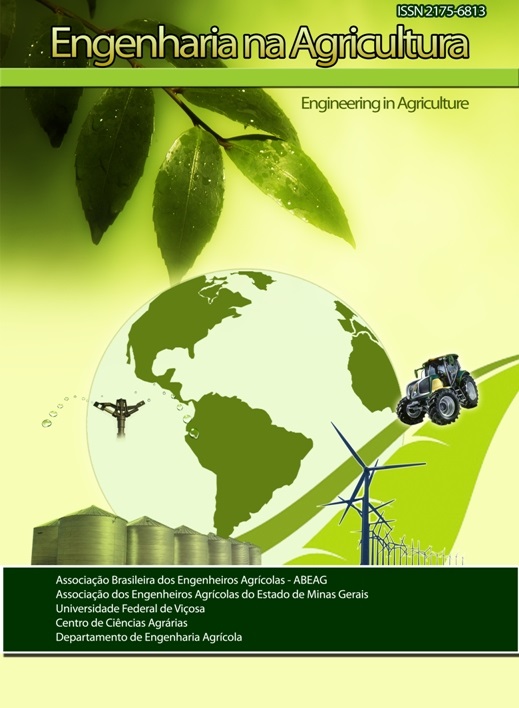YIELD ESTIMATE OF IRRIGATED COFFEE BY SPECTRAL AGRO ECOLOGICAL ZONE METHOD
DOI:
https://doi.org/10.13083/reveng.v25i1.727Keywords:
balanço hídrico, modelo agrometeorológico, sensoriamento remotoAbstract
The notorious role of coffee in Brazilian economy justifies and motivates the realization of scientific researches that contribute to the improvement of the culture monitoring, refine the productivity estimation and offer political support for planning and commercialization. In this context, the present thesis aimed the monitoring and the productivity estimation of coffee plantations – located in the northwest of Minas Gerais – by means of an agrometeorological-spectral model. The spectral monitoring was done through the behavior of the EVI and NDVI vegetation indexes, fed by spectral data from MODIS sensor with the MOD13Q1 product. The original mathematical agrometeorologycal model is based on the penalization of cultivation potential productivity due to the hydric deficit between the culture potential evapotranspiration (ETc) and the real evapotranspiration (ET), adjusted by different sensibility culture coefficients (ky) for different fenological states. A value of r² was obtained by adjustment of the model parameters for the plantations and resulted between 0,79 and 0,95 and also a concordance index “d” Willmott between 0,93 and 0,95 for different pivots. The satisfactory results confirm the potential of the agrometeorological-spectral model application for estimation of productivity of plantations.Downloads
Downloads
Published
How to Cite
Issue
Section
License
Authors who publish with this journal agree to the following terms:
The author(s) authorize(s) the publication of the text in the journal;
The author(s) ensure(s) that the contribution is original and unpublished and that it is not in the process of evaluation by another journal;
The journal is not responsible for the views, ideas and concepts presented in articles, and these are the sole responsibility of the author(s);
The publishers reserve the right to make textual adjustments and adapt texts to meet with publication standards.
From submission, the author is fully conceding the paper's patrimonial rights to the publication, but retaining the owner of its moral rights (authorship and paper's identification) according to Creative Commons Attribution-Noncommercial.








 Licensed by
Licensed by 